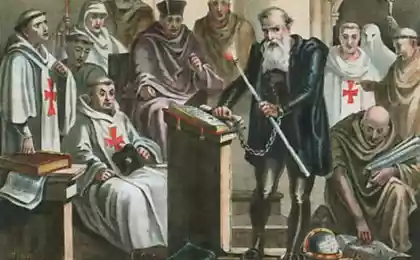851
According to the theory of six handshakes, we all know each other through mutual friends

The theory of six handshakes - the theory that any two people on Earth are separated by an average of only five levels of mutual friends (and, correspondingly, six levels of relations).
The theory was put forward in 1969 by American psychologist Stanley Milgram and Jeffrey Travers. Their proposed hypothesis was that everyone indirectly familiar with any other person on the planet through a chain of acquaintances in common rather short. On average, the chain consists of six people.
Milgram was based on the experimental data in two American cities. Residents of the city have been distributed to 300 envelopes, which must be sent to a specific person, who lived in another city. Envelopes can be transmitted only through their friends and relatives. Before Boston destination reached 60 envelopes. Performing calculations, Milgram found that on average each envelope passed through six. Thus was born the theory of "six handshakes».
Milgram's experiment was repeated using e-mail, scientists of the Department of Sociology at Columbia University. Thousands of volunteers they offered to "reach" 20 secret persons reported by only the main characteristics: the name, occupation, place of residence, and education. The first successful attempt was the definition of the mailing address one of those "secret" in Siberia. A volunteer from Australia found the address of the Siberian "purpose" with only four posts!
Microsoft experts Analysis of the data obtained for the month of communication 242 720 596 members, took two years. The volume of the test data was about 4, 5 terabytes. In this database, it was found that each of the 240 million users of the service could "walk" to another in average for 6, 6 "step." The researchers mathematically proven theory and the conventional joke that after five persons each of us is familiar with the Queen of England.
Incidentally, based on the theory of "small world" and there was a variety of popular games in the US. For example, scientists are playing "Erdos Number". Hungarian mathematician Paul Erdos - one of the major scholars of the twentieth century, which has a huge number of works written in collaboration. It is necessary to find the shortest chain from him to another famous scientist. If he had written some work with Erdos, the Erdos number he is one. If, in collaboration with those who, in turn, wrote something with Paul Erdos, this number he is two, and so on. D. Almost all Nobel Prize winners have small numbers of Erdos.
Sent by: Artem Weinstein
Source: ru.wikipedia.org
via factroom.ru
The prototype of the hero of the film "Rain Man" was Kim Peek, who suffers from a syndrome of giftedness
The emergence of the myth of mermaids, possibly due to the syndrome siren























